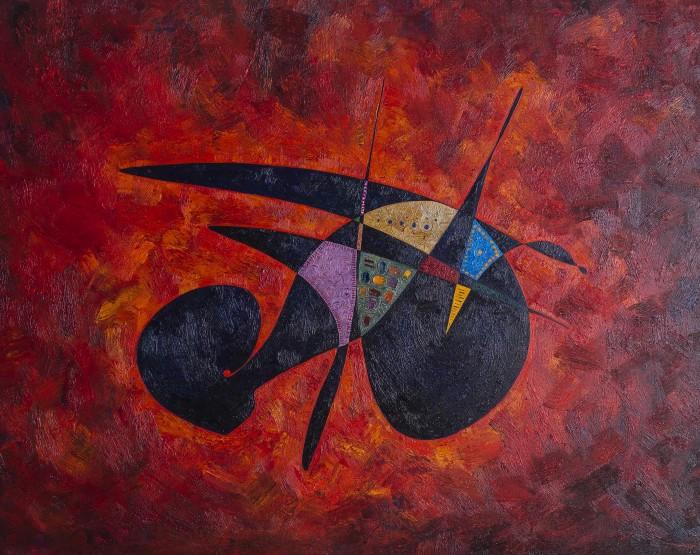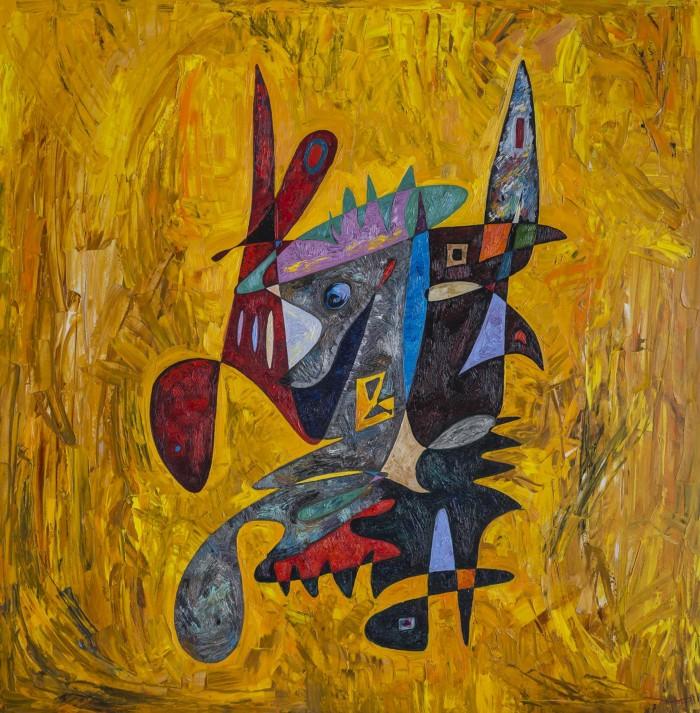Gheorghe Virtosu remains one of the most influential figures in art circles, given his contributions to the development of artistic expression in various Luxembourg, Amsterdam, and London, among other areas. Virtosu is credited for producing several transformative paintings including the “Female Samurai Warrior” in 2017 and “Master of the Waters”, both of which attempt to loosen the grip of censorship through their expressions (Virtosu 2). Over the years, the Moldovan-born British national has cut a niche for himself as a significant force in the abstraction movement, given his production of widely acclaimed art pieces. Virtosu draws substantial inspiration from his checkered past characterized by several hardships, including his stint in incarceration in France (Virtosu 2). The self-taught artist took up both writing and painting during this troubled period when he endured the problem of isolation from the outside world.
Virtosu’s contribution to painting art has received significant recognition, given his unique approach to the application of abstract art as a form of expression. Importantly, his art pieces such as the Female Samurai Warrior incorporate a rich blend of pigment that helps to enhance the visual qualities of the painting. Through abstract paintings, Virtosu continues to explore different concepts on subject matters that can neither be seen nor understood. The Expressive Theory provides a better understanding of the approach taken by Virtosu in his expression of a given reality as visualized in his paintings. According to the theory, which critiques artistic pieces based on their connection to personal elements, the inspirations behind most of Virtosu’s paintings appear to originate from his personal experiences (Preble et al., 484). Additionally, the painter’s connection with the subjects in his art pieces similarly points to a personalized approach toward abstraction. Virtosu’s works also reflect heavily on the standard practices in the abstract art movement that include the pursuit of inspiration from sources such as dreams to advance visual expression (Mullennix and Robinet 364). Two of the painter’s works of art, including the “Fatimah Bint Muhammad” and the “Connection of civilizations” paintings, provide significant insights into the techniques and styles employed by Virtosu.
Firstly, the “Fatimah Bint Muhammad” painting completed in 2017 incorporates a red and black impasto on the background, which helps to enhance its visual effect. The painting created using oil on canvas through hatching similarly employs the use of an impressive brushwork that enhances its abstraction (Mullennix and Robinet 369). The object at the center of the painting similarly reveals the brilliant brushstrokes possibly achieved by an airbrush that helps to accentuate the shapes in question. Overall, the painting is an artistic embodiment of the personal feelings of Virtosu towards the daughters of Prophet Muhammad whose personal tribulations and triumphs mirrored his own. It is also important to appreciate the sizing effect applied to the painting, given its role in enhancing the painting’s general pigment.
Secondly, the “Connections of civilization” painting reveals Virtosu’s consistency in the application of certain techniques in his approach to abstraction. The background mixture of the colors yellow and light red in a cross-hatching fashion enhanced the visibility of the central objects shed in different colors (Mullennix and Robinet 370). To achieve this fete, Virtosu must have used an incredible primer that served to enhance the adhesion of the oil paint used on the backdrop. Additionally, the brushwork appears to have been loosely applied to reduce the intensity of both the yellow and red pigments. The merging of shapes and forms to create the centerpiece also serves to highlight the intent to advance the theme of transition, as evidenced in the “Connections of civilizations” painting.


Works Cited
Mullennix, John & Julien Robinet. “Art Expertise and the Processing of Titled Abstract Art.” Perception, vol 47, no. 4, 2018, pp. 359-378. Sage Journals, Web.
Preble, Duane, et al. Prebles’ Artforms, 12ed. Pearson Education, 2019.
Virtosu, Gheorghe. “Gheorghe Virtosu.” 2020, Web.